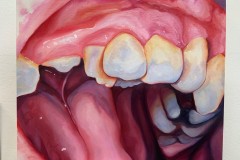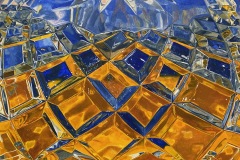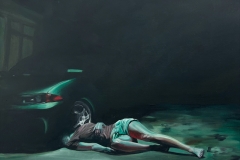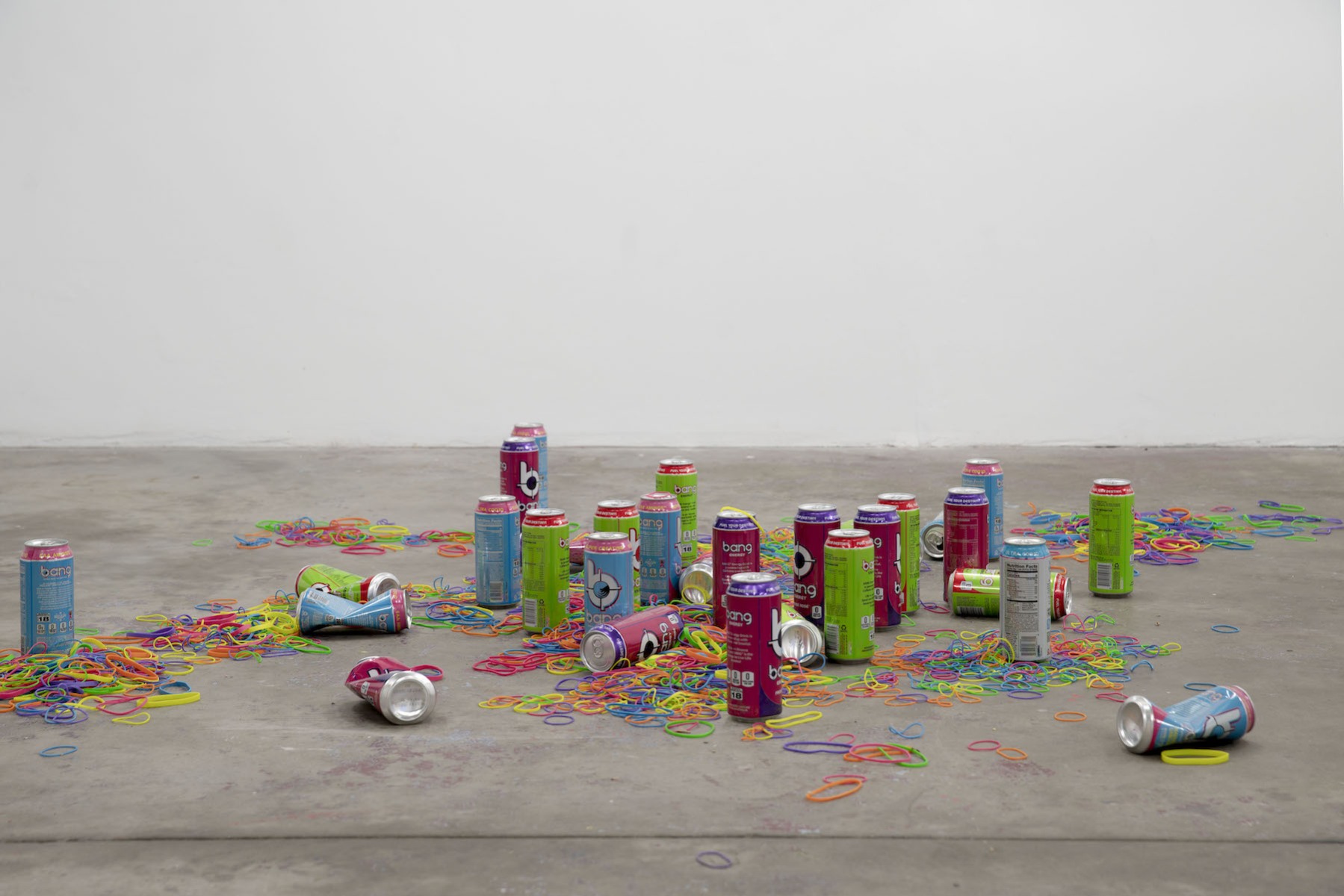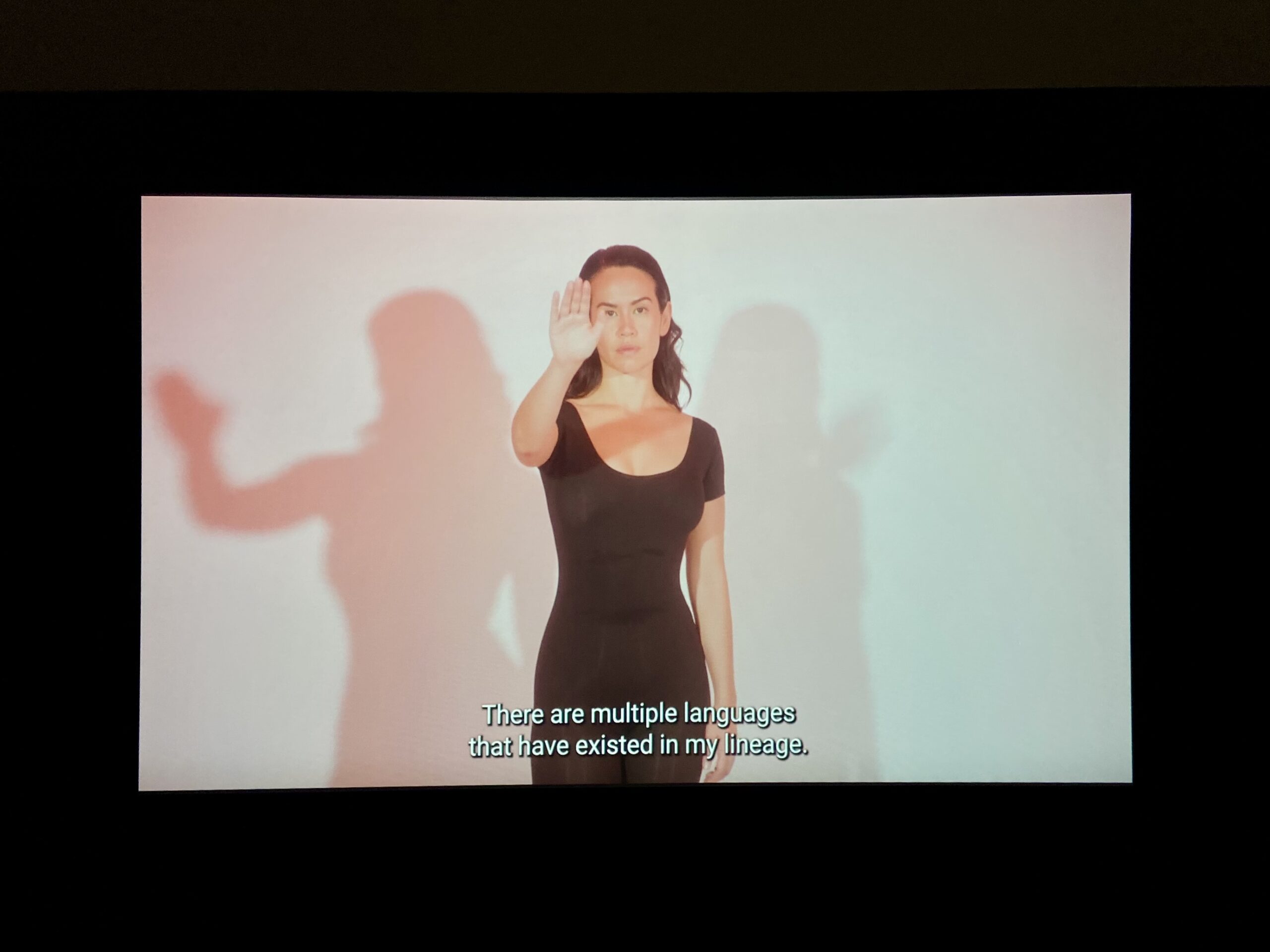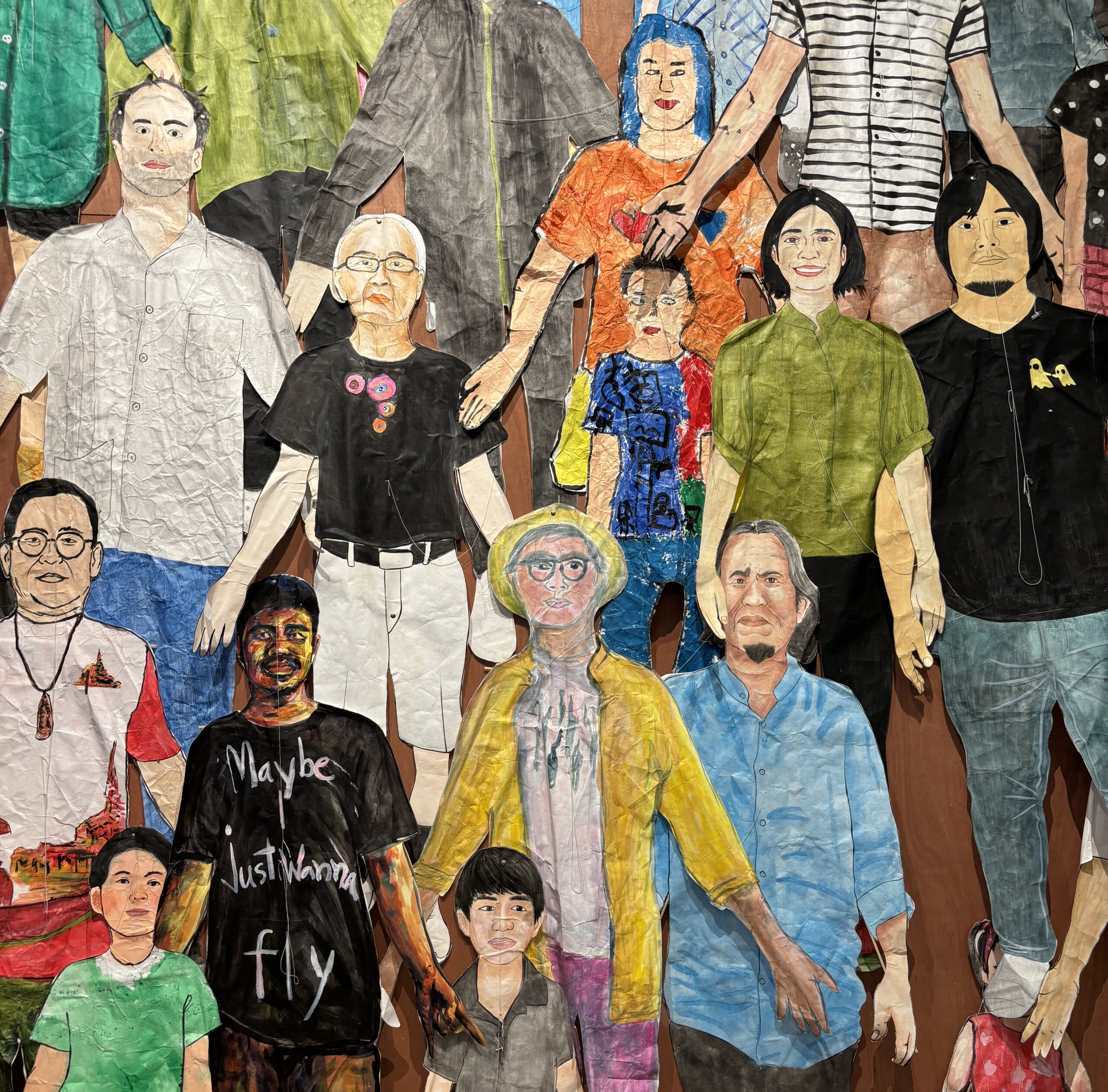It’s graduate season.
In this highlight of the annual arts calendar, graduating student-artists showcase their first major bodies of work. Among the anxious-swell of opening night crowds, most visible are the artists and their accompanying retinues of proud family and friends. The latter are often visiting an art school for the first time, making opening night a conceptually-, physically- and emotionally-charged introduction to contemporary art complete with bewildering university layouts, DJs and long award speeches. For those in the artworld, crowds are heavy with familiar faces. Current and former staff, gallerists, curators, artists and artworkers alike drink, network and survey the show, assessing the peculiarities of each year and identifying rising stars.
On Thursday, the first of Meanjin’s key grad shows opened at Queensland College of Art (QCA), showcasing graduates in Visual Art, Photography, Contemporary Australian Indigenous Art (CAIA) and Design.
This year’s hang is especially strong. Forgiving the lack of breathing space (there’s never enough room for a grad show), the show adeptly combines on the line hangs, salon hangs, installation, sculpture and projections, instilling dynamism in every room and revealing a wider-ranging interpretation among this cohort of studio disciplines. An exception was Expanded Sculpture in the River Studios, where a fiercer edit would have served both individual artists and the group. Shifting focus to the works: an interest in the body and the construction of identity, especially experiences of illness, mental distress and motherhood repeated across campus. A quieter thread championed the slowness of creative practice.
Although QCA employs a medium-led model, students can and do stretch beyond their major studio area, often to great effect. Case in point is the hero(ine) of this year’s show: Photographic Art Practice graduate, Amanda Bennetts. Known widely to the Sunshine Coast for her work with the 40 under 40 Exhibition and Art Prize (co-curator), IN | artist run initiative (co-director), The Path professional development program (participant) and more, Bennetts will soon be equally well-known in Brisbane and further afield. Bennetts’ practice previously explored the imaging of the medicalised body via photoshoots and cyanotypes. For her graduating project, she has substantially matured her thinking and creative processes. The Spectacle of the Antagonist presents an urgently-paced, two-screen video of found footage, placing her in conversation with leading contemporary artists from Tara Marynowsky to Christian Marclay. In black-and-white (literally and figuratively), sick bodies from film history are repeatedly demonised, zombified, gaslit, and punished. This is an articulate and engaging re/presentation of narratives attached to illness in contemporary culture, rooted in Bennetts’ own knowledge and made relevant for broader audiences. Bennetts rounds out the professionalism of this work via careful installation, pairing it with an anachronistic screen displaying words such as ‘medicate’ and “screening” her work off from the surrounding art with a medical curtain that doubles as theatre screen. Bennetts deservedly won the 2022 Industry Award Best In Show: Visual Arts, Photography and CAIA judged by Ellie Buttrose, Curator of Contemporary Australian Art, QAGOMA and the 2022 Outstanding Achievement in a Major—Photographic Art Practice.
Joseph Camara and Samantha Wallis of Jewellery & Small Objects also distinguished themselves from their peers. In a gallery dedicated to fine motor skills, Camara and Wallis’ sculptural installations commanded larger swathes of space. Camara’s Brain Waste constructs a wave-like form of washed-out blue- and white-collared shirts. Hanging from the ceiling via thin wire coat-hangers, the shirts appear alive, dancing, yet ghostly and ultimately absent. Camara describes the collective garment as a tribute to immigrants and workers whose clothes and careers are often rendered useless by migration. A closer look reveals the shirts have been delicately deconstructed and sewn together, a single red thread metaphorically represents the wearer’s journey across uneasy seas. Camara’s stitching returns us to the intimate finger-work of his field. On the opposing wall, Wallis’ Untitled (My Body is a Cage) is a construction of two binary parts: one upright board leaning against the wall and an oozing mess of polyurethane stretching across the floor. It’s a continuation of Post-Minimalism’s bodily abjection in an exaggerated fleshy tone of orange-pink.
Further works stood out for working squarely within their medium. Samara Sutton-Baker, for example, captures striking elements of the built environment. In each (pseudo)photograph, something is awry. Like a glitch in the matrix, walls repeat and float into the sky. Elsewhere rising staircases zig yet their zagging counterparts are found missing. Sutton-Baker’s works almost belong in architecture and interior decorator magazines. They speak a deeply familiar language of crisp lines, modernist shapes, and a level of cleanliness only possible via the absence of humans. Her work intelligently plays with the inherent truthfulness of photography to present an attractive, though disconcerting, vision of our world. Sutton-Baker was awarded the 2022 Outstanding Achievement in Advertising Photography.
Lynn Hughes also deploys her selected medium to great success. Her paintings present a cropped image of the world viewed through the refracting prisms and patterns of cut glass. The result is delightfully lurid and surprisingly trippy compositions: equally, and paradoxically, hyper-realistic and a new form of abstraction. In a throwback to Velázquez that the Baroque artist could never have foreseen, Hughes’ uses painting to explore the act, and the depiction of the act, of looking.
Finally, the following works caught my eye. Crowd favourite, Alex Piperides’ cast bronze pool noodles, and Mia Gribbin’s stretches of earthy-green dyed material exude a confidence of form that could see them in any number of contemporary art spaces tomorrow. Ivy Minniecon’s Shimmer series Balji also revealed a maturing of her practice. Across three screenprints, she transformed woven baskets into delightfully light, subtle and shimmering lines. Delicacy repeated in Saloni Saran Aligh’s gothic painting Untitled #1 from her series Echo Chamber and Chloe Healy-Johnson’s Breath No Longer Breath 4 (which won the 2022 Outstanding Achievement in Drawing). Lily Nolan’s Purpose 1 is a set of three ceramic (non)cups. Added circles, arches and triangles in pastel pink, blue, deep purple and vivid orange turned Bauhaus’ functionalism on its head. They are the works I wish I’d bought, if only I’d arrived earlier. Paintings by Jasmin Harris, Courtney Simpson and Bonnie Qin presented starkly different, yet equally affecting, images of women’s bodies. Harris’ painting of a child’s open mouth with crowding and emerging teeth rippled with the childhood memories that we carry within our adult bodies. Simpson’s green and noir-like painting of a prostate woman, head placed before the tyres of a car, conjured the far more disturbing memory-emotions of being a young woman in public space after dark. Finally, Qin’s depiction of a fleshy, tightly cropped and nude torso likens the body to the undeniable materiality of boulders. Channelling Jenny Saville, Qin’s honest depiction of flesh was rendered tenderly, combining a striking composition with stunning paintwork.
On my second visit, I found myself drawn to a video by Adam John Waters, set within his broader photographic series, Daily, for which he won the 2022 Outstanding Achievement Award in Documentary Photography. Standing before a mirror/camera he shifts his stance, struggling to make contact with our gaze. The work is quietly awkward and anxious, suggestive of the awareness of being looked at and the open-endedness of waiting for something beyond your control to happen. The human figure is always engaging, as evidenced by the cluster of figurative works in this review. Yet there’s something additionally compelling about this introspective examination, which like Bennetts’ work transmutes the personal into the universal.
Louise R Mayhew is an Australian Feminist Art Historian and the Founding Editor of Lemonade.






